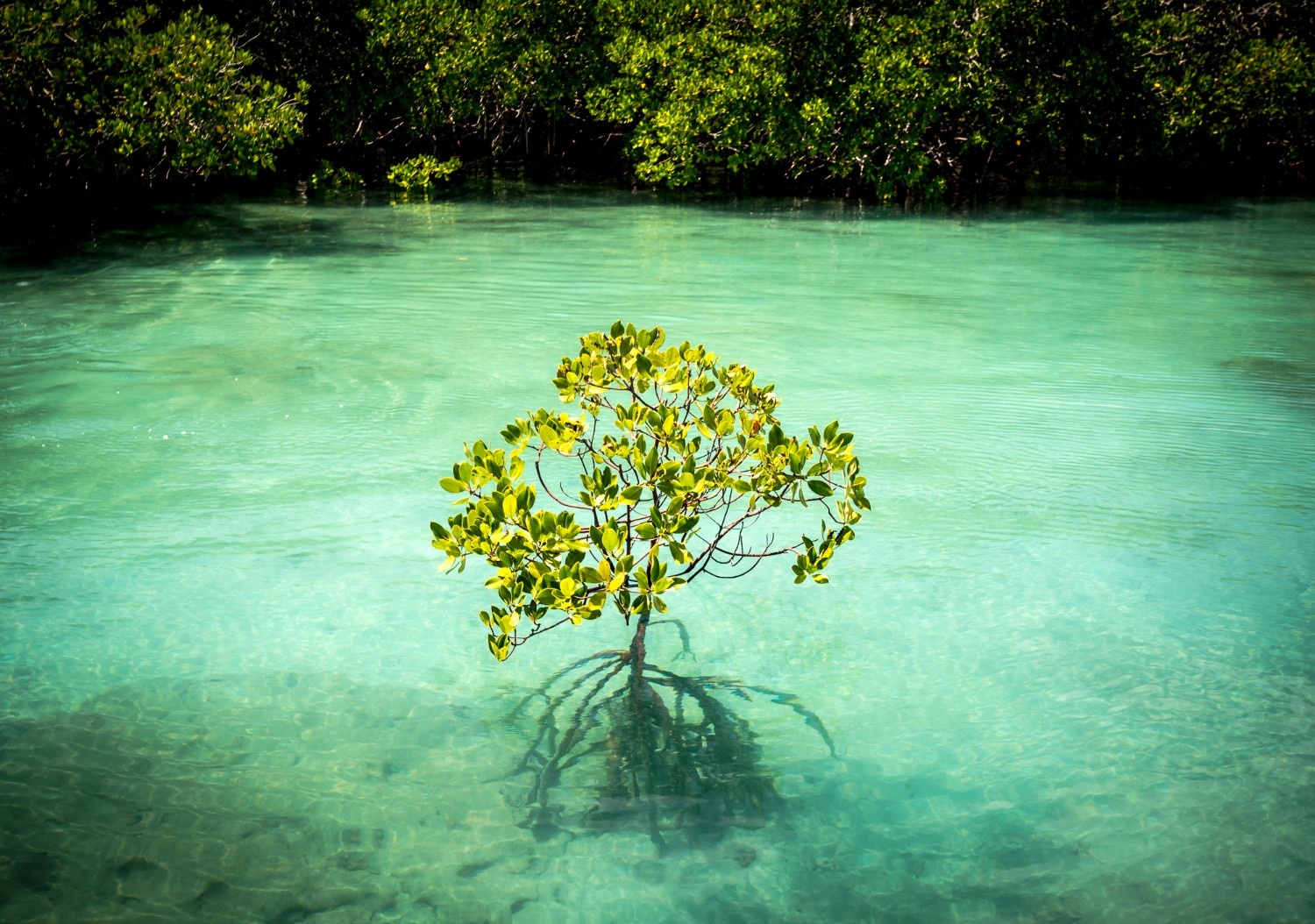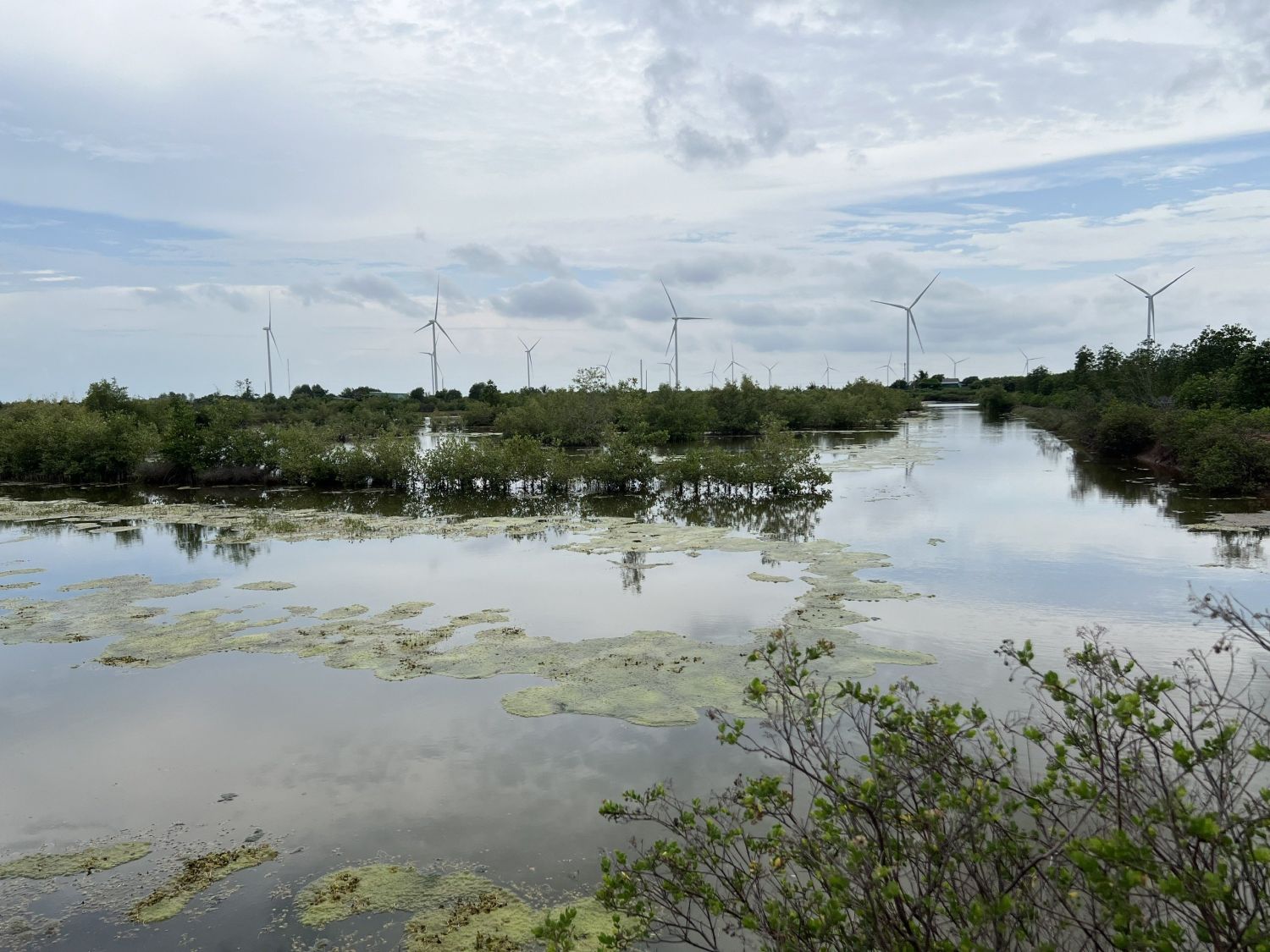New IUCN report shows loss of tidal wetlands in Yellow Sea slowing since 2013, but urgent action is still needed.
Urgent action is needed to conserve the endangered intertidal zone and associated habitats along the Yellow and Bohai Seas, with populations of globally threatened and near threatened waterbird species continuing to decline, according to IUCN’s new report titled Situation Analysis on the Yellow Sea with Particular Reference to Intertidal and Associated Coastal Habitats. The report provides an update on the status of the Yellow Sea ecosystem since the first publication of the IUCN Situation Analysis[1] , more than ten years ago.
The Yellow Sea remains a globally important site for biodiversity and livelihoods
The Yellow Sea ecosystem of intertidal wetlands is among the ecological wonders of the world. The Yellow Sea is bordered by the People’s Republic of China, the Democratic People’s Republic of Korea and the Republic of Korea, and represents the largest area of intertidal tidal flats on the planet. They support a number of vital ecosystem services that underpin socio-economic development, including fisheries, tourism, disaster risk reduction, blue carbon storage and climate change resilience. The Yellow Sea is also the most important staging area for migratory water birds in the East Asian-Australasian Flyway, with millions of water birds depending on these wetlands during their migrations.
An increase in local conservation efforts
The new report highlights the efforts taken by governments since 2012 to reduce environmentally damaging activities throughout the coast. Both the People’s Republic of China and the Republic of Korea have ordered halts to new coastal land claims, while the area of wetlands under protection has increased in the Democratic People’s Republic of Korea and the Republic of Korea.
The World Heritage Committee has inscribed two natural World Heritage properties along the Yellow Sea on the World Heritage List; one in PRC, Migratory Bird Sanctuaries along the Coast of Yellow Sea-Bohai Gulf of China (Phase I), and one in ROK, the Getbol, Korean Tidal Flats. In addition, the countries have made important changes to their environmental plans, policies and laws. These are expected to have a positive impact on the integrity of natural ecosystems in the region.
Community support for coastal wetland conservation and its wise-use appears to have increased over the last decade. There has been a substantial increase in the number of volunteer groups and non-governmental organisations helping to monitor the migrations of shorebirds and other water birds, as well as increased media coverage and special events, demonstrating enhanced awareness among coastal communities.
As a result of conservation efforts, satellite analyses suggest that the rate of loss of tidal wetlands has slowed since 2013.
Threats remain and migratory bird species are still decreasing
However, this rate of wetland loss is still negative, indicating that the loss of intertidal wetlands continues. The area of coastal land claims (reclamations) developed over the last 40 years around the Yellow Sea coastline is estimated to be between 9,700-10,500km2, which now exceeds the most recent estimate of the area of remaining tidal flats in the region (6,668 km2).
International population monitoring of globally threatened or near-threatened migratory waterbird species that depend on the Yellow Sea intertidal wetlands indicate that populations continue to decline in 81% of monitored species. The population declines of migratory shorebirds have been quantitatively linked to their reliance on the remaining Yellow Sea habitats, suggesting that global-scale declines in migratory birds are being driven by widespread degradation and loss of habitats in the Yellow Sea migratory bottleneck.
Regional fishery catches have also declined by an estimated 40% since 2012, highlighting a loss of marine biodiversity and impacts on local livelihoods.
“This report is the result of extensive cooperative efforts between governments and specialists from the Yellow Sea countries and regional organisations. The volume of data published since 2012 demonstrates that there is now a strong focus on ensuring the sound conservation of the key ecosystems of the Yellow Sea.” said Raphael Glemet, Senior Programme Officer, Water and Wetlands at IUCN Asia. “The efforts from governments have been significant, with drastic changes in coastal policy and the protection of new sites, but urgent efforts are still needed to tackle the remaining and emerging threats leading to continuous habitats and species loss”.
A renewed call for action
The publication identifies a number of new solutions and conservation actions to combat ongoing environmental degradation, such as:
- Improve coastal wetlands governance, including integrated management streamlining and coordinating responsibilities between jurisdictions;
- Urgent remedial actions, including halting further land claims across all countries;
- Expanding the area of natural ecosystems under protection to fill crucial gaps identified in this report;
- Ensure that the integrity of all natural attributes of the existing World Heritage properties can be conserved avoiding any negative effects of development projects;
- Define restoration actions, and Nature-based solutions where needed to improve habitat conditions for migratory birds and tackle societal challenges;
- Develop a collaborative mechanism to share management expertise between the three Yellow Sea countries and also with other coastal countries;
- Other urgent actions required include improved planning and siting of wind farms, the release of riverine sediments and freshwater from heavily managed river catchments, invasive species management and bans on destructive fishing methods and overfishing.
Read the full report here
The report will be translated into the national languages of the Yellow Sea countries and disseminated amongst stakeholders later this year.
[1] IUCN (2012). IUCN situation analysis on East and Southeast Asian intertidal habitats, with particular reference to the Yellow Sea (including the Bohai Sea), Gland, Switzerland.



